· Anglesey ·
Down to the rocks first thing, the low light sparkling on the sea, illuminating the village and island; the mainland shrouded in shadows.
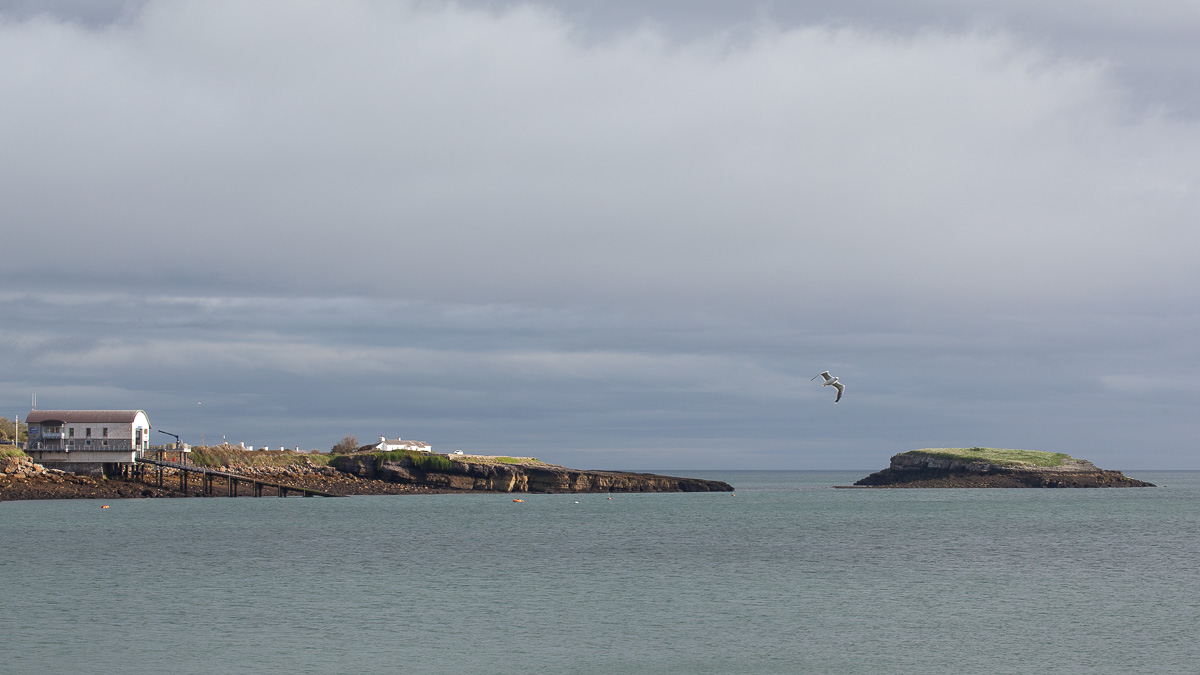
After a while, I spotted a distant commotion in the glare out towards the Great Orme. A vortex of seabirds had formed a couple of miles out to sea. Gannets mostly. Lots and lots of gannets, with more joining all the time. The avian tornado circled clockwise, birds continuously plunging after fish from on high, down into the sea. The water was full of bobbing, squabbling seabirds. Many of the gannets in the water took off again, always to the right, into the wind, rising and circling clockwise with the general flow until they had gained sufficient altitude to dive again. At its height, several birds were hitting the water every second. After ten minutes or so, the commotion subsided, the twister lost its identity, and the gannets just disappeared, leaving hundreds and hundred of gulls to mop up.
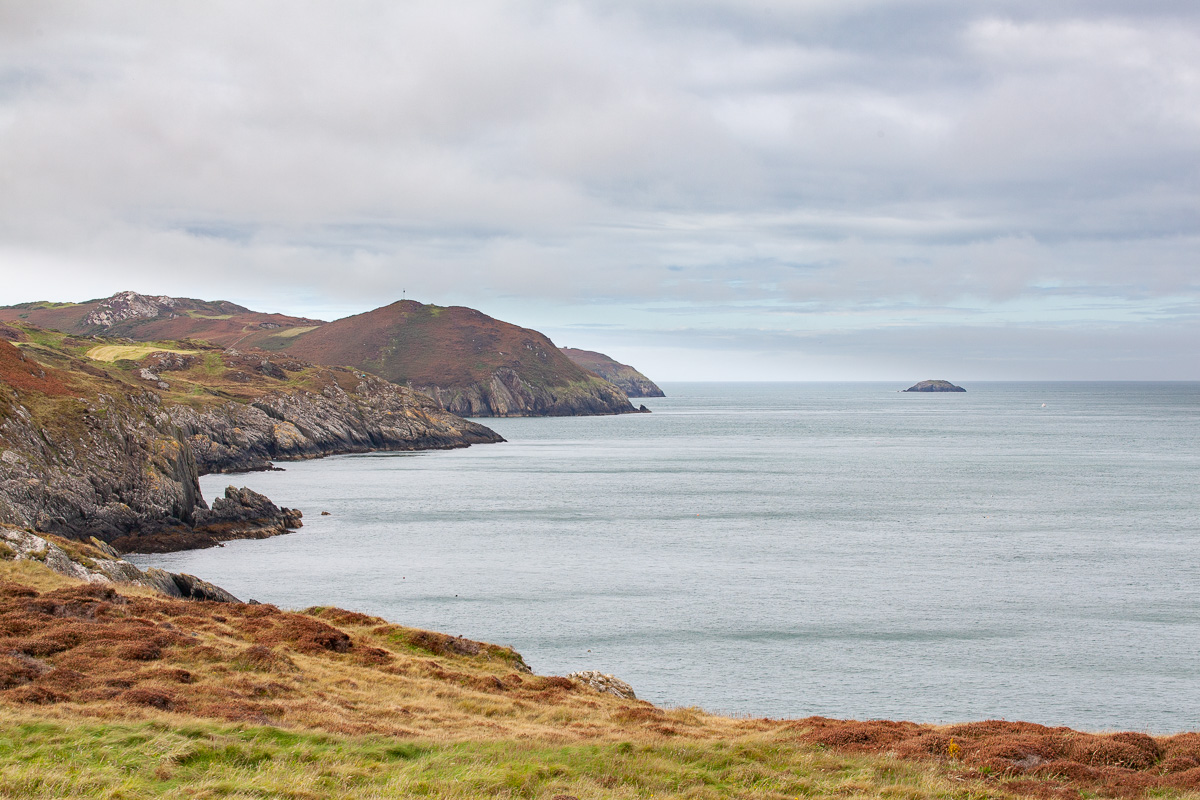
To Bull Bay in the afternoon for my favourite walk along the headland. In the unlikely event I turn out to be wrong about the non-existence of heaven, I imagine it would be very much like the north coast of Anglesey. I took all the same photographs I take every year because, well, why wouldn’t I? Gannets soared high above the sea. Gorse, heather, thrift and devil’s-bit scabious coloured the headland yellow, purple, pink and blue: Anglesey colours. Unusually, there was no sign of any ravens, but I did hear the happy, playful calls of choughs, and eventually managed to spot a secretive pair dibbing for worms with their curved beaks. In the unlikely event I also turn out to be wrong about the non-existence of reincarnation, I think I might like to come back as a Bull Bay headland chough.
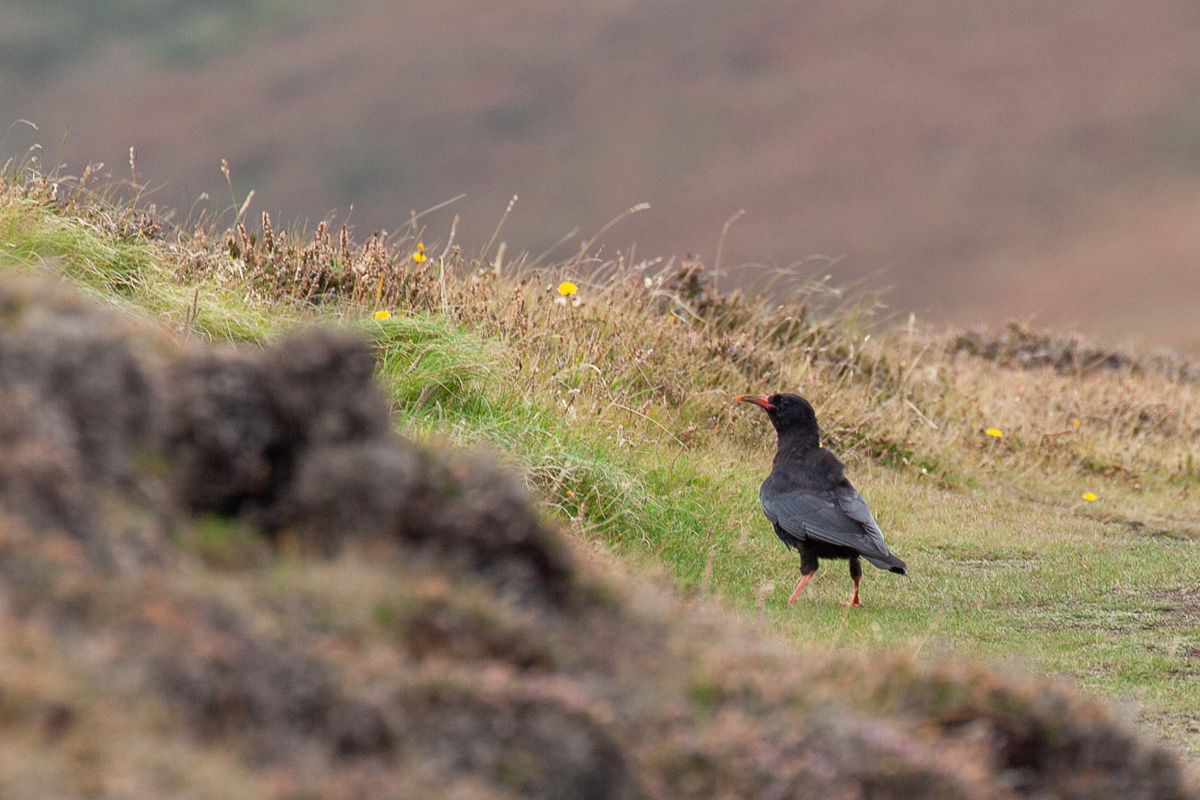
A real thrill as we approached one of the kissing gates: a pair of common lizards sunning themselves on some black rubber that used to spring-shut the gate. Frustratingly, behind a wire fence as they were, it was impossible for me to get a decent photograph with my fancy camera, but then Jen had the brilliant idea of using the camera on her iPhone. I followed suit. Sometimes, the best camera for the job is the one you can squeeze through a wire fence! I was delighted with the result.
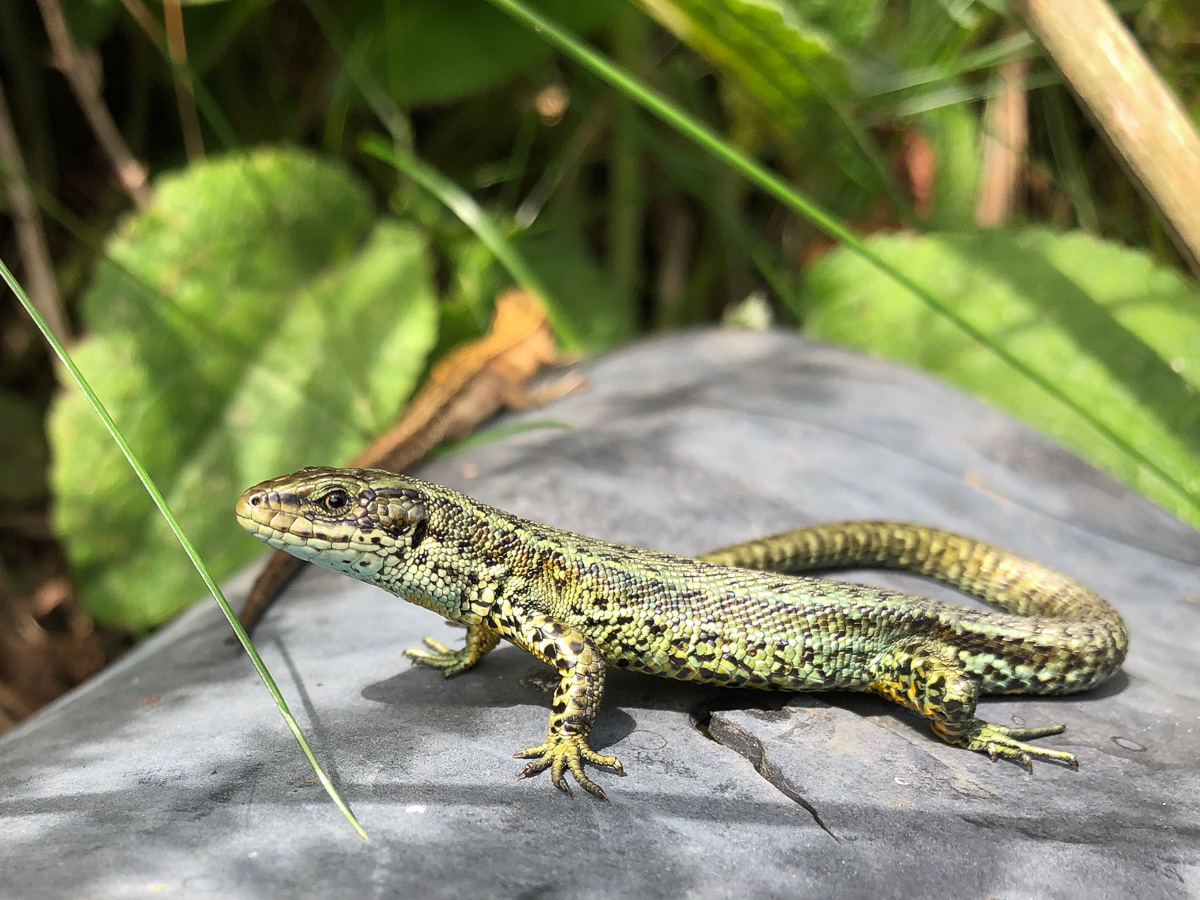
Having reached the far end of our walk overlooking Porth Wen, we took shelter from the strong onshore wind behind a low cliff and had a brew. Then it was back the way we came towards thrill number two: a pair of porpoises—mother and child—fishing just off the rocks.
Absence of ravens aside, a perfect walk!
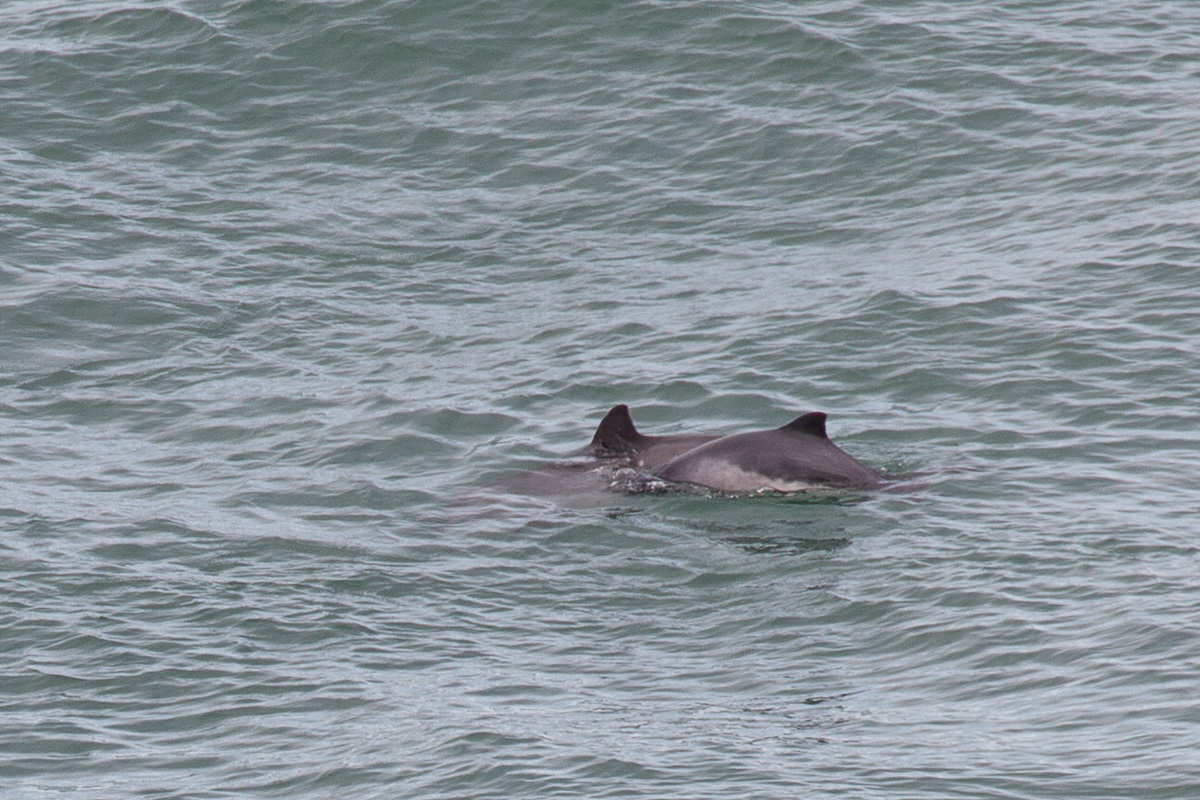
Back to the rocks early evening. Scores of house martins milling about, stocking up on flies in the lea of the headland. They’ll be away soon. Most of the swallows have already gone, although there are still quite a few stragglers about. Or perhaps they’re not stragglers, but passage migrants from farther north.
Leave a Reply